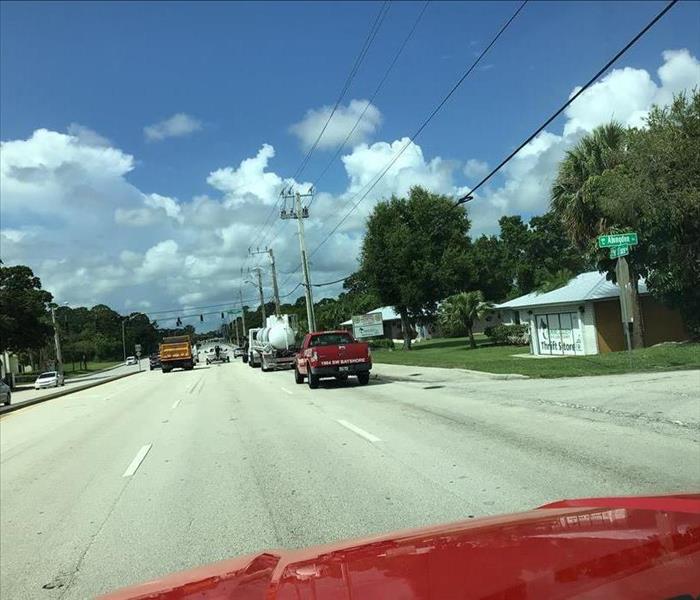Kitchen Cleaning Challenges After Port St Lucie Fire Damage
12/18/2023 (Permalink)
 Don't let a kitchen fire snuff out your Holiday spirit. Call SERVPRO for rapid restoration in Port St. Lucie. Here to Help® 24/7
Don't let a kitchen fire snuff out your Holiday spirit. Call SERVPRO for rapid restoration in Port St. Lucie. Here to Help® 24/7
Experts Tackle Protein-Based Residues in St Lucie
Based on reported home fires, National Fire Protection Association data indicates that cooking causes half (53%) of all household blazes. This statistic fails to mention that besides the kitchen being a common ignition site, soot related to cooking fires is notoriously challenging to dislodge.
Even if you quickly snuff out the flames, St Lucie kitchen fire damage has already occurred. Exhaust hoods, counters, walls, ceilings, and appliances near the fire are soot-covered. The harm can extend to areas far from your kitchen, causing progressive deterioration.
Characteristics of Cooking Fire Soot
The residues created by a cooking fire are unique. Food and oils used in meal preparation soar past their smoking point or ignite because of inattention, a boilover, or a spill during the crisis. Heat causes chemical changes--food ingredients dehydrate, and oils turn rancid. The result is a fine, oily mist that travels throughout all spaces in your home on superheated air currents. This protein-based soot is:
- Transparent, although it eventually causes yellow to dark brown discoloration
- Adhesive, clinging like a varnish or lacquer to all surfaces
- Horrible smelling because of the rancidity
Eliminating Lingering Fire Damage
Breaking the bond between the protein-based soot and structures or contents requires the experience and skills of SERVPRO® technicians. Our crews complete the Institute of Inspection, Cleaning and Restoration Certification (IICRC) program. They carefully choose the most effective interventions to dislodge, emulsify, and capture the residues for disposal. Strategies include:
- Use of oil-based solvents as oil strips away oily residues
- Adding grit to cleansers or scraping with abrasive tools, leveraging agitation to loosen the residue
- Innovative deodorization techniques like hydroxyl generation or thermal fogging that neutralize the stench through chemical reactions rather than merely masking the smell
Contact SERVPRO of Port St. Lucie NE at (772) 266-2350 immediately after suffering cooking fire damage. Our crew is ready 24/7 to clean up tough protein-based kitchen fire residues.






 24/7 Emergency Service
24/7 Emergency Service